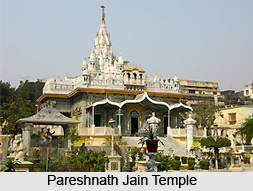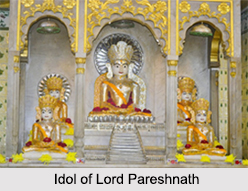 Kolkata has diverse cultural and religious history. This is evident from the temples and other monuments that adorn the city and its suburbs. The Jain Temple in Kolkata is known as the Pareshnath Jain Temple, and is located in the northeast side of the city, at the bustling Badridas Temple Street. This temple is a very renowned and was built by an art enthusiast named Ray Badridas Bahadur. The temple serves as an important worshipping place for the Jain community in Kolkata and also for others.
History of Pareshnath Jain Temple
Kolkata has diverse cultural and religious history. This is evident from the temples and other monuments that adorn the city and its suburbs. The Jain Temple in Kolkata is known as the Pareshnath Jain Temple, and is located in the northeast side of the city, at the bustling Badridas Temple Street. This temple is a very renowned and was built by an art enthusiast named Ray Badridas Bahadur. The temple serves as an important worshipping place for the Jain community in Kolkata and also for others.
History of Pareshnath Jain Temple
The Parasnath or Parshwanath Jain Temple of Kolkata was built by Ray Badridas Bahadur in 1867. The temple is dedicated to Pareshnath, who was the 23rd Jain Tirthankar is worshipped by the Jains. The temple consists of four temples inside it. The four main temples are Shitalnath Ji Temple, Chandraprabhu Ji temple, Mahavir Swami Temple and Dadawadi and Kushal Ji Maharaj Temple where the footprint of Jain Acharya Jin Dutt Kushal Suri is kept and worshiped. Towards the south of the temple of Sri Sitala Nath Ji, lies the shrine of Sri Chanda Prabhujidev, which was built by Ganeshlal Kapoorchand Jahar in the year 1895. The last temple is dedicated to Lord Mahavira, who was the last Tirthankara of the Jain tradition.
The deity of Lord Shitalnathji is seated in the sanctum sanctorum, and his diamond-studded forehead is a major attraction for the visitors. There is a lamp, which burns with ghee inside the sanctum sanctorum, which has been continuously burning ever since the initiation of the temple. The lamp bears silent testimony to the contemporary world since ages and it is wonderful to acknowledge the mysticism associated with it.
Architecture of Pareshnath Jain Temple
The Pareshnath Jain Temple in Kolkata displays exquisite designs and has an impressive structure consisting of mirror-inlaid pillars and windows that are made of stained glass. The interiors of the temple are splendidly beautiful, along with the outdoors, which are surrounded by many beautifully colored flower gardens and fountains. There is a small stream flowing through it, which also has amazing variety of flowers all around it. The fountains look brilliant when water gushes out of them in perfect harmonization. A well-maintained reservoir, adds up to the surrounding beauty. Colorful fishes swarm the surface of the glistening water at the slightest hint of food grains. The floor of the temple is elaborately paved with marble that gives it a solemn look and also a mark of purity. The temple exhibits extraordinary artistic tendencies that are visible in the whole pattern of the decoration of the interiors and the exteriors. One can also find the paintings of renowned painter Ganesh Muskare adorning the walls which enthralls the visitor. Chandeliers or Jhar Battis are another feature that makes the interiors sparkle and lends the extra shimmer to the serenity of the temple.
 Festivals in Pareshnath Jain Temple
Festivals in Pareshnath Jain Temple
Main Jain temple is the Paryushan where festival is celebrated in Bhadrav month. During this period the Jains observe Ahimsa, listen to recitations of scriptures of worship and perform charitable deeds. The last day of festival is called Samvatsari. It is one of the most important Jain temples in Kolkata. On Rash Purnima day grand processions are taken out from the temple.
Visiting Information
Pareshnath Temple is located at a distance of 7 kilometres from the centre of the city and can be reached by taxis, rickshaws or local buses via Acharya Prafulla Chandra Road or Bidhan Sarani or Raja Ram Mohan Sarani. The tram system is also quite well connected to it. The temple is located in Badridas Temple Street, North-East Kolkata. Buses and taxis ply to the desired venue and it is also approachable by metro. The nearest railway station is Sealdah/ Bidhan Nagar. The nearest metro station is Sovabazar/ Shyambazar.











